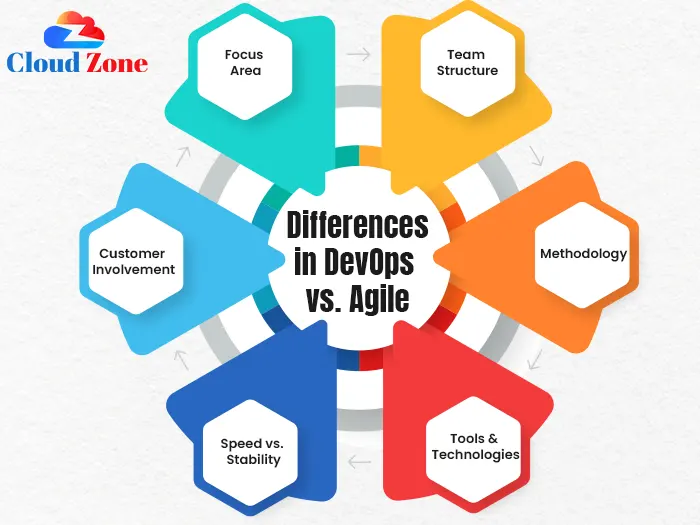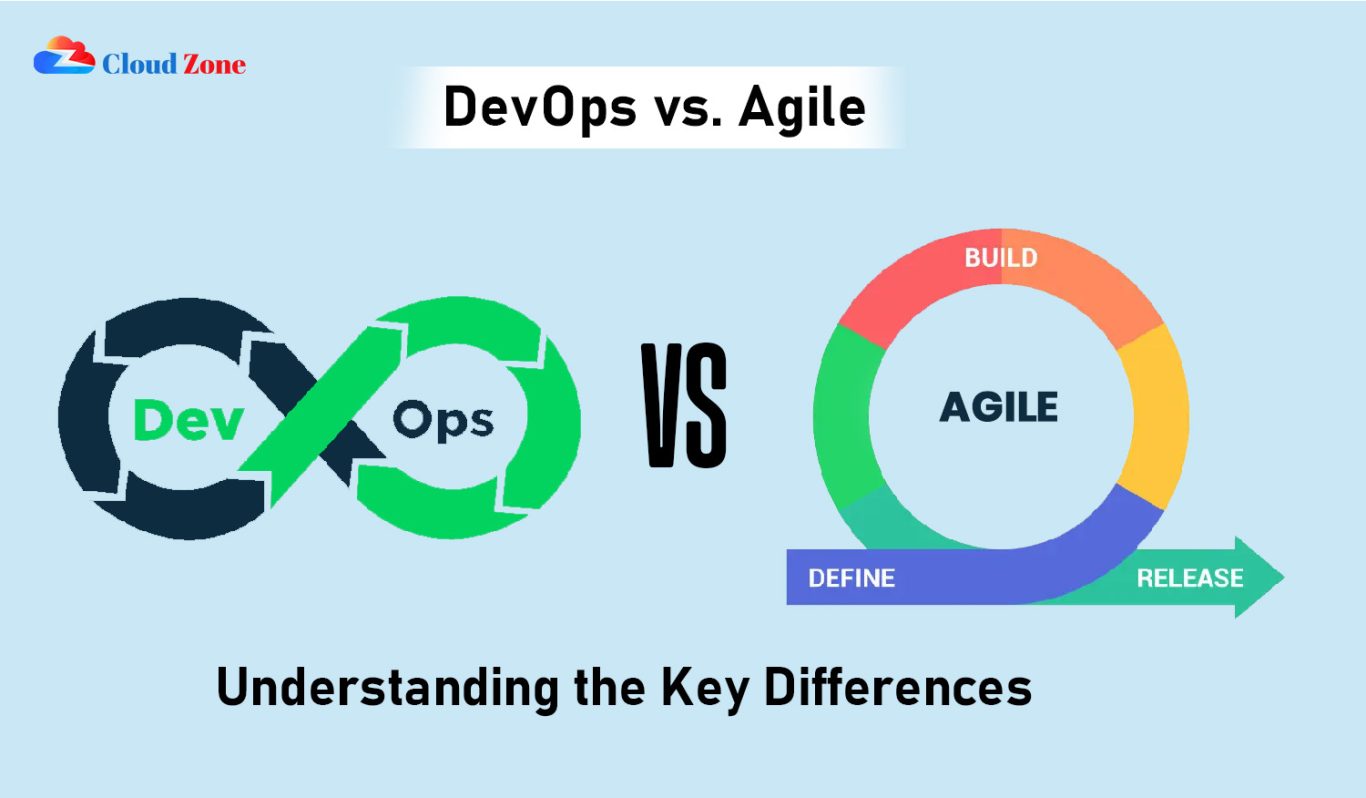Introduction
The current rapid software development environment drives organizations to search for methods that can enhance efficiency and product quality while strengthening collaboration. DevOps and Agile stand out as the two most popular approaches adopted by organizations today. Although both methodologies target improvements to the development lifecycle they feature distinct differences in their implementation strategies as well as their foundational principles and focal points.
This article examines the essential distinctions between DevOps and Agile methodologies while discussing their respective benefits and how they operate together to enhance current software development practices. We will conduct an analysis of how these methodologies meet user needs and integrate with search engine optimization (SEO) practices.
What is Agile?
The Agile software development methodology focuses on iterative development and integrates customer feedback with team collaboration. Teams can quickly adjust to new requirements while providing high-quality products through a step-by-step delivery process.
Key Principles of Agile
The Agile Manifesto provides the principles which Agile methodology adheres to.
- Individuals and interactions over processes and tools.
- Working software over comprehensive documentation.
- Customer collaboration over contract negotiation.
- Agile prioritizes adapting to changes instead of adhering to a fixed plan.
Agile Methodologies
Several frameworks follow Agile principles, including:
Scrum: Software development and delivery occur through time-boxed iterations known as sprints.
Kanban: Kanban concentrates on workflow visualization and work in progress limitation.
Lean: Eliminates waste to enhance efficiency.
What is DevOps?
DevOps combines development (Dev) and operations (Ops) teams through practices that enable automated and efficient software delivery. The DevOps approach prioritizes the implementation of continuous integration and continuous deployment together with monitoring systems.
Key Principles of DevOps
DevOps is built on the following principles:
Collaboration: Breaking silos between development and operations teams.
Automation: Reducing manual tasks to enhance efficiency.
Continuous Integration & Continuous Deployment (CI/CD): Ensuring frequent and reliable software releases.
Monitoring & Feedback: Identifying issues and improving performance.
DevOps Practices
CI/CD pipelines: Automate building, testing, and deployment.
Infrastructure as Code (IaC): Enables infrastructure management by using code.
DevOps vs. Agile: Understanding the Key Differences Use tools like Ansible, Puppet, and Chef.
Monitoring & Logging: Implement monitoring and logging solutions using Prometheus together with ELK Stack and Splunk.
Agile vs. DevOps: Key Differences

Agile and DevOps pursue similar objectives yet present unique characteristics.
1. Focus Area
Agile: This methodology concentrates on software development with rapid feature delivery.
DevOps: DevOps extends its reach throughout the software lifecycle including development stages until deployment reaches completion with monitoring.
2. Team Structure
Agile: Teams work in small cross-functional groups that consist of developers along with testers and business analysts.
DevOps: The DevOps framework achieves integration between developers and operations teams by dissolving old divisional barriers.
3. Methodology
Agile: Uses iterative development with frequent releases.
DevOps: DevOps uses automation combined with CI/CD and monitoring to make the process seamless.
4. Tools & Technologies
Agile: The Agile methodology utilizes JIRA, Trello, and Confluence to manage projects.
DevOps: The DevOps approach utilizes Jenkins, Docker, Kubernetes, and Terraform to automate deployment processes.
5. Speed vs. Stability
Agile: Prioritizes speed and adaptability.
DevOps: Ensures speed with stability and reliability.
6. Customer Involvement
Agile: Involves customers in every iteration.
DevOps: The DevOps approach emphasizes both system performance and end-user experience.
How DevOps and Agile Work Together
Agile and DevOps serve different functions but they work together to achieve optimal results. Agile provides development frameworks while DevOps manages deployment and operational tasks in many organizations. The integration of these methodologies enables organizations to deliver new features quickly while maintaining system stability.
Benefits of Combining Agile and DevOps
Faster development cycles: Agile supports rapid iteration cycles and DevOps handles deployment automation.
Improved collaboration: Through Agile, teams work together effectively while DevOps strengthens the interaction between development and operations teams.
Higher quality software: Ongoing testing and integration practices lead to superior code quality.
Better customer satisfaction: The Agile methodology prioritizes customer requirements while DevOps establishes dependable delivery processes.
Agile and DevOps from a User Perspective
The Agile methodology offers users advantages through its capacity for ongoing enhancements based on received feedback. Through deployment automation and downtime reduction DevOps delivers stable and seamless experiences for users.
- Users expect fast updates (Agile enables this).
- Users demand reliable software (DevOps guarantees this).
- Combining both approaches produces a product that consistently delivers high quality and receives regular updates.
Agile and DevOps According to SEO Practices
The application of specific SEO best practices is essential for improving search engine rankings of content about Agile and DevOps.
Keyword Optimization: Search engine optimization for this content requires the use of relevant keywords such as “DevOps vs. Agile,” “Agile methodology,” “DevOps tools,” and “Agile vs. DevOps comparison.”
Quality Content: Create high-quality content that delivers detailed information to answer typical user questions.
Structured Headings: Proper use of H1, H2, and H3 tags will improve text readability.
Internal and External Links: Ensure that every page includes links to established external resources and related internal pages.
Engaging Meta Descriptions: Crafting precise meta descriptions that contain relevant keywords will help boost your click-through rates.
Mobile Optimization: Make certain that your mobile content adapts to different device sizes and displays promptly.
Choosing the Right Approach
Organizations need to understand their objectives before deciding on Agile or DevOps.
Agile is the preferred methodology when feature development and iterative delivery stand as your main priorities.
Implement DevOps methodologies to enable automated deployments while increasing operational reliability and fostering better teamwork between developers and operations teams.
Adopt both Agile and DevOps practices to achieve comprehensive optimization throughout the development lifecycle.
While Agile and DevOps are different in focus and implementation, they share a common goal: improving software development and delivery. Agile brings better team collaboration and flexibility while DevOps focuses on automation and stability assurance. The combination of Agile and DevOps methodologies allows organizations to deliver faster software releases while maintaining high quality standards and enhancing customer satisfaction.
The article achieves enhanced visibility and reader engagement by aligning with user needs and SEO best practices to empower readers to make informed choices about Agile and DevOps.
